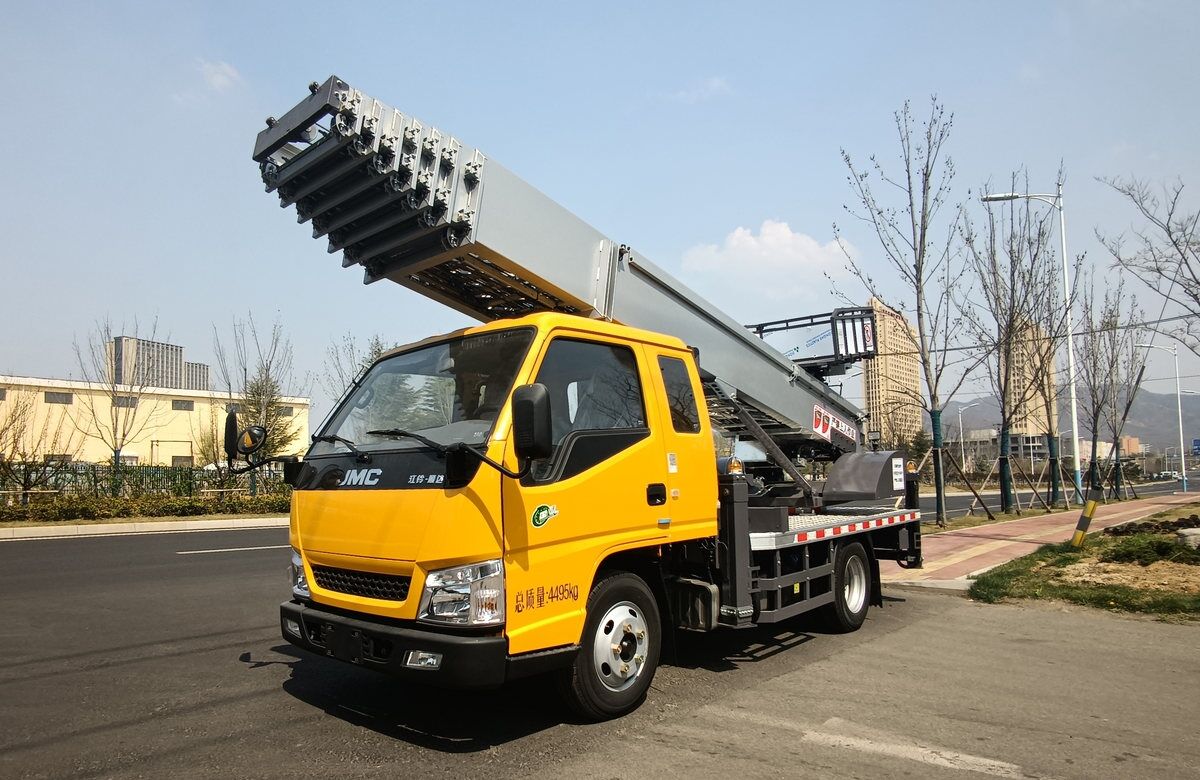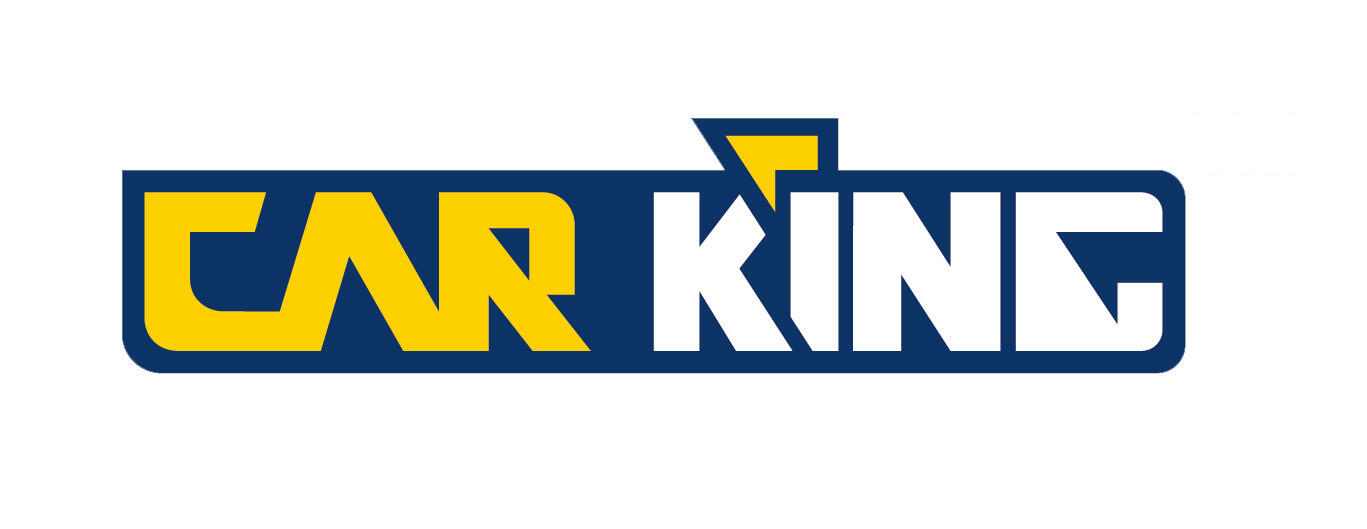Განვითარების მცირე მოძრაობის მანქანების განმარტება და იх ძირითადი ფუნქციები
Განვითარების მცირე მოძრაობის მანქანების მიზანის გასაგება
Აერო მუშაობის ვაჰიკებს (AWVs) თამაშობენ გარკვეულ როლს ახალ ინდუსტრიაში, მისცემjąc მัრთლებრივ წვდომას აღმასრულებელ სამუშაო ადგილებს. ეს მანქანები გარდაქმნეს აღმასრულებელი დავალებები, საბაზისოდ შემცირებული არის ტრადიციული მეთოდების, როგორც ლებედი და საფარების, გამოყენება. მუშაობის სამართლების და ოპერაციული ეფექტიურობის გაუმჯობესებით, AWVs-ები გახდენ უნივერსალურად გამოყენებლები როგორც განსხვავებულ ინდუსტრიებში.
Სამართლე და ეფექტიურობა: AWV-ები აღჭურვილია მახასიათებლებით, რომლებიც გარანტირებენ უსაფარო აღწერას და მუშაობის მასტავის მარტივ ჩამოყალიბებას, რაც საკმარისად შემცირებს მიმართულ მცდელობებს, რომლებიც დაკავშირებულია ხელით აღწერის საშუალებებს. ეს განაპირობავს უფრო უსაფარო მოქმედებებს და უფრო ეფექტურ მუშაობის მოწყობას, განსაკუთრებით იმ გარემოებში, სადაც სიმაღლე წარმოადგენს გარკვეულობას.
Მრავალმხრივი გამოყენება: AWV-ების გამოყენება მრავალ სექტორს მოიცავს. მშენებლობაში, ისინი ხელს უწყობენ ძნელად მისადგომ ადგილებში წვდომას ისეთი სამუშაოებისთვის, როგორიცაა შეღებვა და ფასადების მშენებლობა. მოვლა-პატრონობისას, ისინი საშუალებას იძლევიან მაღალი ნაგებობების, როგორიცაა ლამპიონების ბოძები და აბრები, შეკეთებისა და მოვლა-პატრონობის. კინოინდუსტრია AWV-ებს საჰაერო გადაღებისთვისაც კი იყენებს, რაც მათ ადაპტირებადობას ხაზს უსვამს.
AWV-ების გავრცელება მიუთითებს მათი მნიშვნელობას უფრო უსაფარო და მუშაობის ეფექტური გარემოების შექმნაში. როგორც ინდუსტრიები განაგრძობა სიმაღლეზე დაფუძნებული წესების და ეფექტურობის მოთხოვნების გადაჭრაში, ეს მანქანების როლი უარყოფილად გაიზარდება.
Ძირითადი კომპონენტები და მუშაობის მექანიზმები
Გასაგები ანატომია Აერო მუშაობის მანქანა არის ძველი მის ფუნქციონალის გასაგებად. ძირითადი კომპონენტები, როგორიცაა პლატფორმა, ბუმი და ჰიდრაულიკური სისტემები, წარმოადგენენ ეს მანქანების ხребტს, რომლებიც შესაძლებლობას აძლევენ ადამიანებს ეფექტურად მუშაობა განსხვავებულ გარემოებში.
Ძირითადი კომპონენტები: პლატფორმაა ძირითადი ზონა, სადაც მუშაობს მუშაობელები, ხშირად აღარისთვით ამნებით ადამიანური უსაფრთხოებისთვის. ბუმი, გაფართოებადი ხელი, აძლევს საჭირო სიმაღლეს და გამავალს, ხოლო ჰიდრაულიკური სისტემა მძიმებს ამ მანქანის აღმასრულებელ და მართვას.
Ადაპტაცია და უსაფრთხოების მახასიათებლები: ახალ ავტომობილები AWV-ის დიზაინი შექმნილია განსხვავებული მუშაობის პირობების ადაპტაციისთვის, მათი გაფართოებადი და ჩამორთვის მექანიზმების გამო. ეს მანქანები აღარისთვით უსაფრთხოების მახასიათებლებით არის აღარისთვით, როგორიცაა განადგურების სისტემა და გამატების სენსორები. ასეთი გამართვები არ მხოლოდ დაცვის მომსახურების აძლევენ ოპერატორებს, არამედ უზრუნველყოფენ მაღალი უსაფრთხოების წესების შესრულებას.
Მყარი დიზაინის და დახვეწილი მექანიზმების კომბინაცია AWV-ებს გადამწყვეტ აქტივს ხდის სიმაღლესთან დაკავშირებულ ამოცანებში. როგორც ინდუსტრიები ვითარდება, ამ ოპერაციული მახასიათებლების მუდმივი გაუმჯობესება კიდევ უფრო დაადასტურებს საჰაერო სამუშაო მანქანების აუცილებლობას უფრო უსაფრთხო და ეფექტური სამუშაო პროცესების მისაღწევად.
Საჰაერო სამუშაო მანქანების ძირითადი ინდუსტრიები და გამოყენებები
Საშენო და ინფრასტრუქტურის პროექტები
Საჰაერო სამუშაო მანქანები (AWV) შეუცვლელია სამშენებლო ინდუსტრიაში, რაც უზრუნველყოფს აუცილებელ წვდომას მაღალ სიმაღლეებზე, რომლებიც საჭიროა ისეთი ამოცანებისთვის, როგორიცაა ბოძების, ნიშანდების და სახურავის მასალების დამონტა AWV საშუალებას აძლევს მუშებს მიაღწიონ რთულ წერტილებს სწრაფად და უსაფრთხოდ, რაც აუმჯობესებს როგორც პროდუქტიულობას, ასევე პროექტის ვადებს. შრომის სტატისტიკის ბიუროს ანგარიშში ნათქვამია, რომ მშენებლობებზე ავტომობილების გამოყენების შემდეგ სამუშაო ადგილებზე ავარიების რაოდენობა მნიშვნელოვნად შემცირდა. ეს უსაფრთხოების უპირატესობა, ოპერაციული ეფექტურობისთან ერთად, ხაზს უსვამს უძრავი ავტომობილების მნიშვნელოვან როლს თანამედროვე მშენებლობებსა და ინფრასტრუქტურულ პროექტებში.
Ტელეკომუნიკაციები და სამზარეულო მართვა
Ტელეკომუნიკაციებისა და სამზარეულო სექტორებში, ჰაერობრივი მუშაობის მანქანები (AWV) გამოთვალებისა და რეპარაციის ფართო ხაზზე წარმოდგენილ ხაზებისა და გამოყენების მოწყობილობაში ძალიან მნიშვნელოვანი როლი ასახავენ. ტელეკომუნიკაციებისთვის AWV-ები უზრუნველყოფენ, რომ ტექნიკები უფრო მัრთველად და ეფექტურად შეძლონ სამუშაო ადგილზე მუშაობა, რათა გარანტირდეს ძირითადი კომუნიკაციური ქსელების სწორი მუშაობა. მსგავსად, სამზარეულო მართვა ძალიან მორჩევენია AWV-ებზე, რათა განახორციელოს ელექტრო ხაზების რეპარაცია და ქუჩის სინათლების ინსტალირება. ეს მუშაობის ეფექტიურობა ძალიან მნიშვნელოვანია, რადგან მაღალსიჩქარი ინტერნეტისა და მართლივი სამზარეულო სერვისების მოთხოვნა უწყვეტ ზრდება, რაც ხდის ეს მანქანები მიუთითეს მიერთივებად ინდუსტრიის საჭიროების შესაკმარისად.

Ჰაერობრივი მუშაობის პლატფორმების ტიპები ახალ გამოყენებაში
Boom Lifts: ვერტიკალური და ჰორიზონტალური მაღალის მრავალფეროვანობა
Ბუმის ამწეები მრავალმხრივი ინსტრუმენტია, რომელიც გამოიყენება სხვადასხვა სექტორში და გთავაზობთ როგორც ვერტიკალურ, ასევე ჰორიზონტალურ შესაძლებლობებს. ეს ამწეები ადაპტირებადია მრავალი ამოცანისთვის, მაღალსართულიანი სამშენებლო პროექტებიდან დაწყებული უფრო მარტივი ამოცანებით დამთავრებული, როგორიცაა ხეების გასხვლა. ბუმის ამწეების მოძრავი მკლავები ხელს უწყობს დაბრკოლებების გვერდის ავლით გადაადგილებას, რაც მათ იდეალურს ხდის რთული სამუშაო ადგილებისა და სიზუსტის მოთხოვნით ამოცანებისთვის. ინდუსტრიის ანგარიშები ხაზს უსვამს, რომ ბუმის ამწეები ზრდის ოპერაციულ ეფექტურობას აღჭურვილობის გადაადგილებისთვის დახარჯული დროის მინიმიზაციით, რაც გადამწყვეტი ფაქტორია სწრაფი ტემპის სამუშაო გარემოში.
Scissor Lifts: სტაბილურობა მართული აღდგენისთვის
Ღერძნობის წყვილები გათამაშებენ მუდმივ პლატფორმას ვერტიკალური აღჭრის დასახელებისთვის, ჩვეულებრივ იმ სცენარებში, სადაც ზუსტობა არის მთავარი. ეს წყვილები შემდგომია ადამიანთა და აღჭრის აღჭერისთვის, რაც ხშირად მოიხსენება ინდუსტრიულ გარემოებში და შიდა სამუშაო ადგილებზე, სადაც მიწა არის სიბრტყეზე უსაფრთხოდ მუშაობისთვის. მათი კონტროლირებული აღჭერის შესაძლებლობა განსაკუთრებით განსაზღვრულია რისკების შემცირებისთვის, რაც მხარდაჭერილია განსხვავებული კვლევებით. ეს ხდის ღერძნობის წყვილებს უფრო მოსარჩევ არჩევანს ტრადიციული აღჭრის მეთოდებზე, განსაკუთრებით იმ გარემოებში, სადაც უსაფრთხოება არ უნდა შეწყვეტილოს.
Უსაფრთხოების სტანდარტები აერო სამუშაო მანქანების მუშაობისთვის
OSHA-ს რეგულაციები და კომპლიანსის მოთხოვნები
Occupational Safety and Health Administration (OSHA) დამატებით მიუთითებს მარტივი სტანდარტებს აერო სამუშაო მანქანების (AWV) მუშაობისთვის, მითითებული უსაფრთხოების მნიშვნელობას სამუშაო გარემოში. OSHA-ს რეგულაციების კომპლიანსისთვის შეიძლება რამდენიმე მთავარი ელემენტი ჩაიწეროს:
Რეგულარიზებული შემოწმება: მასალების კვალიტეტის დაცვის გარანტირების შემდეგ, რისკები შემცირდება, რათა დაცვილიყოს ოპერატორები პოტენციალური მექანიკური ვარაუდებისგან.
Ოპერატორთა სწავლა: სრულყოფილი სწავლა ხელს უწყობს ოპერატორებს საუსამართლო პროტოკოლების გასაგებად და AWV-ების სწორი გამოყენების შესახებ, რაც შემცირებს რაბითობის ამოცანების რისკს.
Მასალების სწორი გამოყენება: რეკომენდაციების მიმართ მიმდევრობის შესაბამისად, რომელიც აღწერს, როგორ უნდა გამოიყენოს AWV-ები საუსამართლოდ, ძალიან მნიშვნელოვანია ინციდენტების პრევენციაში.
Მიუთითებელთა რეგულაციების ურთიერთობაში გარჩევა არ მხოლოდ შეუცვავს მუშაობელებს, არამედ გახსნის მათ დამსაქმებელებს პოტენციალურ შტრაფებსა და კანონურ შემდგომებებს, რაც განსაზღვრავს, რომ OSHA-ს რეგულაციების მიმართ მიმდევრობა არის უსაფრთხოებისა და სტრატეგიული ბიზნეს ზომა.
Მასალების ოპერატორთა სწავლის პროტოკოლები
Ეფექტური სწავლის პროტოკოლები ძალიან მნიშვნელოვანია აერო მუშაობის მანქანების საუსამართლო მართვისთვის საჭირო უნარების მისაღებად. ასეთი სწავლის პროგრამები ჩვეულებრივ შეიცავს განახლებულ კურსულ პროგრამას:
Თეორეტიკური ცოდნა: მომართველებმა ისწავლენ ძირითადი პრინციპები, ჩა Gaussian იყო მოწყობილობები და საẨETY სტანდარტები, რათა დაემატოს მძლავრი ფუნდამენტური გასაგები.
Პრაქტიკული გამოცდილება: ეს პრაქტიკული კომპონენტი აძლევს მომართველებს შესაძლებლობას მოგება გამოცდილება AWV-ების მართვაში და ეფექტურად შესრულება განაპირობული процедуრები.
Ექსტრემალური პასუხი და უსაფრთხოების პროტოკოლები: კარგად განვითარებული ამ სფეროების ცნობილობა აძლევს მომსახურებლებს შესაძლებლობას სწრაფად მოქმედებაში კრიტიკულ სიტუაციებში, რაც გამარტივებს უსაფრთხოებას სამუშაო გარემოში.
Უსაფრთხოების ორგანიზაციების კვლევები ჩვენს მიერ აჩვენებს, რომ კარგად განათლებული მომსახურებლები საკმარისად ნაკლებად არიან ჩამონათვალი ავარიულებში. ეს გამოსახავს კრიტიკულ როლს, რომელსაც ძლიერი განათლების პროტოკოლები ასრულებენ უსაფრთხოების და ეფექტიურობის გამარტივებისას AWV-ების გამოყენებისას.
Aerial Work Vehicles-ის პრეიმუსები تقليსიურ მეთოდებზე
Გამოსავალი სიერთიანობა სირთულის გარემოებში
Საჰაერო სამუშაო მანქანები (AWV) უზრუნველყოფს უპირატეს მანევრირებას და ეფექტურობას მჭიდრო ან რთულ სამუშაო გარემოში ტრადიციულ მეთოდებთან შედარებით, როგორიცაა კიბეები ან დამაგრება. AWV საშუალებას იძლევა ერთდროულად მუშაობა მრავალმხრივი მუშაკი, რაც ხელს უწყობს უფრო სწრაფად დასრულება პროექტი. ეს ნიშნავს, რომ იმ ადგილებში, სადაც შეზღუდული წვდომაა ან სადაც საჭიროა მრავალჯერადი დავალებების კოორდინაცია სიმაღლეზე, AWV- ებს შეუძლიათ მნიშვნელოვნად გააუმჯობესონ ოპერაციები. შემთხვევის კვლევები სხვადასხვა სამუშაო ადგილებში აჩვენა მნიშვნელოვანი დროის დაზოგვა AWVs გამოყენებისას, ხაზგასმით აღნიშნავს მათი ეფექტურობა გაზრდის პროექტის ეფექტურობა. მათი საშუალებით გუნდები უპრობლემოდ უმკლავდებიან რთულ ამოცანებს.
Ხარჯთაღრიცხვა და რისკების შემცირება
Მიუხედავად იმისა, რომ AWV-ების საწყისი ღირებულება შეიძლება მაღალი იყოს, მათი გრძელვადიანი სარგებელი ხშირად აღემატება ამ ხარჯებს. AWV-ები ამცირებს სამუშაო საათებს და მაქსიმალურად ამცირებს უბედურ შემთხვევებს, რაც მთლიანობაში მნიშვნელოვან დანაზოგს იძლევა. დაზიანების ან დაცემის რისკის შემცირებით, უპრობლემო ავტომობილები ხელს უწყობენ პოტენციური პასუხისმგებლობის შემცირებას და სამუშაო ადგილების უსაფრთხოების გაზრდას. ფინანსური ანალიზი მუდმივად აჩვენებს, რომ AWV-ებში ინვესტიციამ შეიძლება გამოიწვიოს პროექტის ბიუჯეტში ხარჯების მნიშვნელოვანი შემცირება. AWV-ების გაძლიერებული უსაფრთხოების მახასიათებლები და ეფექტურობა არა მხოლოდ მუშებს იცავს, არამედ ბიზნესს აძლევს საიმედო საშუალებას, შეამციროს ხარჯები სამუშაო ადგილებში უსაფრთხოების მაღალი სტანდარტების შენარჩუნებისას.
Ოპერაციული გამოწვევები და შემსუბუქების სტრატეგიები
Ტერიტორიის და ამინდის შეზღუდვები
Აეროლინიების მუშაობის მანქანების (AWV) მოწყობილობა ხშირად დაკავშირდება გარჩევით და ამინდის პირობებთან. ეს ფაქტორები ძალიან შეიცვალებენ AWV-ების შესაძლებლობებს, რაც მოითხოვს ზედიზედ განვითარებას. ამინდის პირობები, როგორიცაა მაღალი ქარი ან მძიმე წვიმე, შეიძლება შეზღუდოს ეს მანქანების უსაფრთხო მოწყობილობა, რაც შეიძლება განაპირობოს ოპერაციული დაგვიანებების რისკს. ფაქტობრივად, მონაცემები ჩვენებს, რომ უსაფრთხო ამინდი შეიძლება ამაღლოს დაგვიანების რისკს მაღალი 30%-მდე. რისკების შემცირებისთვის, ოპერატორებს საჭიროა სრულყოფაში განათლება, რათა შეფასონ გარემო და განაპირობონ განათლებაზე შესაბამისი გადაწყვეტილებები. შედეგად, რეზერვული განვითარება ხდება უფრო მნიშვნელოვანი ელემენტი ამ გარემოების ეფექტურ მenedžმენტში.
Მანქანის ხელმისაწვდომი მოწყობილობები გრძელი გამოყენებისთვის
AWV-ების გრძელმდადროვან ფუნქციონირებისა და საẨმართლობის გარანტირებად საჭიროა წევრითი მართვა და შემოწმება. ოპერატორებს უნდა ჩაწერონ მართვის კრასტი, დокументირებული ყველა რეპარაცია და შემოწმება. ეს პრევენტიული მომდევნო მეთოდი მართვის გარანტირებს, რომ AWV-ები ეფექტურად მუშაობს, სტატისტიკა ინდიკირებს, რომ კარგად მართული მანქანები 20%-ით ეფექტურად მუშაობს და შედეგად მიღებული მანქანების მუშაობის პერიოდი სიგნალურად გაიზარდება, რაც მიიღებს პროექტების განხორციელებას და დაკლავს მუშაობის ხარჯებს დროის განმავლობაში.
Ხელიკრული
Რა არის ჰაერობრივი მუშაობის მანქანები?
Ჰაერობრივი მუშაობის მანქანები (AWV) არის სპეციალიზირებული მანქანები, რომლებიც შემუშავებულია მაღალ მუშაობის სადგურებზე მაღალ წყაროში წარმოებისთვის. ისინი აღარის მახასიათებლებით, რომლებიც გარანტირებულია მუშაობის საẨმართლობისა და ეფექტურობისთვის მაღალ წყაროში.
Ინდუსტრიებში რომლებში გამოიყენება AWV?
AWV-ები გამოიყენება რაოდენობით სectors-ში, მათ შორის საშუალო და ტელეკომუნიკაციებში, მენტენაში და ფილმის ინდუსტრიაში, რადგან ისინი საშუალებას ძალენ სამუშაო ზონებზე საშიში და უსაფრთხოდ.
Რა არის მასალას მართვის საუკეთესო ნორმები AWV მოქმედებისთვის?
Უსაფრთხოების ნორმები, როგორიცაა OSHA-ს მიერ დაყოფილი, ძალიან მნიშვნელოვანია უსაფრთხო AWV მოქმედებისთვის, რადგან ისინი უზრუნველყოფენ წესრიგით შემოწმებას, ოპერატორთა განათლებას და სწორი აღჭურვილი იყოფა მართვა, რაც საბოლოოდ მცირეობს სამუშაო ამბობის რისკი.
Როგორ ამაღლებს AWV-ები ეფექტიურობას სირთული გარემოებში?
AWV-ები ამაღლებენ ეფექტიურობას სირთული გარემოებში მარტივი მართვის მიერ და შესაძლოა მხოლოდ მრავალი მუშაობელი ერთდროულად, რაც სიმღერას გაუმჯობეს რთული სამუშაო პირობებში.
Შინაარსის ცხრილი
- Განვითარების მცირე მოძრაობის მანქანების განმარტება და იх ძირითადი ფუნქციები
- Საჰაერო სამუშაო მანქანების ძირითადი ინდუსტრიები და გამოყენებები
- Ჰაერობრივი მუშაობის პლატფორმების ტიპები ახალ გამოყენებაში
- Უსაფრთხოების სტანდარტები აერო სამუშაო მანქანების მუშაობისთვის
- Aerial Work Vehicles-ის პრეიმუსები تقليსიურ მეთოდებზე
- Ოპერაციული გამოწვევები და შემსუბუქების სტრატეგიები
- Ხელიკრული

